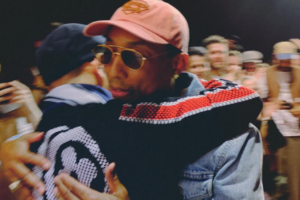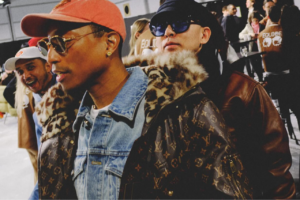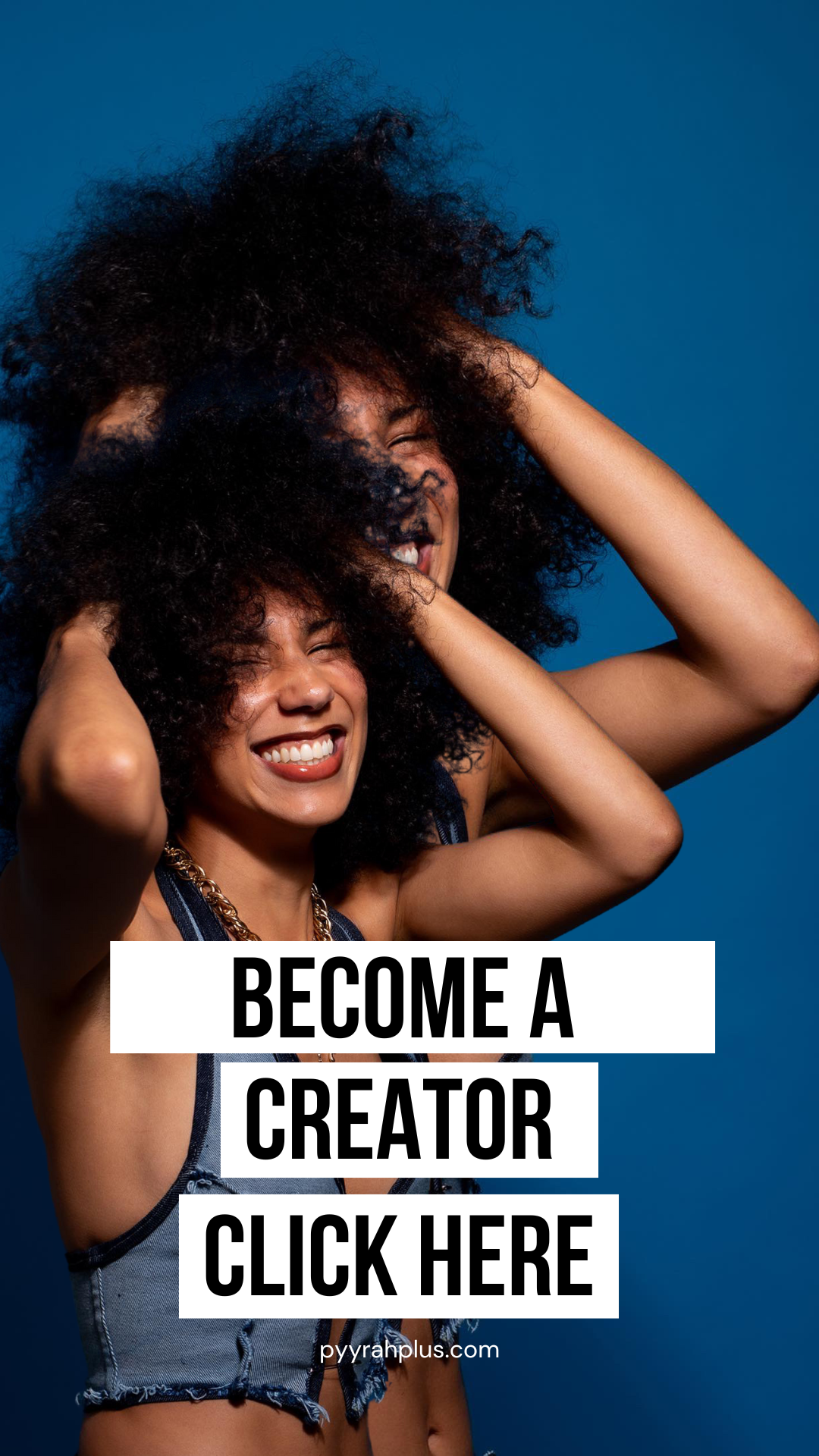In the rarefied air of luxury fashion, where heritage and innovation dance in perpetual tension, Pharrell Williams has reimagined the role of Creative Director through the metaphor of orchestral conducting. At Louis Vuitton, his symphony comprises 55 distinct departments and what he affectionately calls his “2,500 soldiers” – each a virtuoso in their own right, coming together to create something greater than the sum of its parts.
“It’s like a huge orchestra,” Williams explains, his voice carrying the weight of both responsibility and wonder. “My job is to make sure that everything is in harmony.” This musical metaphor isn’t merely poetic flourish; it speaks to the intricate choreography required to lead a luxury house in the modern era. Like a conductor who must understand not just the whole piece but each instrument’s unique voice, Williams has immersed himself in the expertise of the house’s artisans, learning their crafts while simultaneously pushing the boundaries of what’s possible.
The complexity of this role becomes apparent when one considers the scope of a luxury house like Louis Vuitton. Each department – from leather goods to ready-to-wear, from visual merchandising to digital presence – must play its part in perfect time with the others. A single collection isn’t merely about the clothes that walk down the runway; it’s about creating a coherent narrative that resonates through every touchpoint of the brand.Williams’ approach to this massive undertaking is refreshingly human-centric.
“This is like a love movement”
he emphasizes, suggesting that the traditional hierarchical structure of fashion houses might be due for an update. Under his direction, the focus isn’t just on weeding out dissonance but on fostering an environment where creativity can flourish organically. It’s a delicate balance – maintaining the precision required for luxury craftsmanship while creating space for innovation and personal expression.
Perhaps most striking is Williams’ genuine reverence for the artisans he works with. “These masterful artisans I’m surrounded by,” he reflects, his words trailing off as if the full scope of their talent defies description. This appreciation for craftsmanship isn’t just lip service; it’s fundamental to his vision for the house. In an industry often focused on the next big thing, Williams seems to understand that true innovation comes from a deep respect for tradition combined with the courage to imagine new possibilities.

The metaphor of the orchestra serves another purpose as well – it acknowledges that great achievements in fashion, as in music, are rarely solo performances. While the Creative Director might be the most visible figure, the true magic happens in the harmonious collaboration of many skilled hands and minds. This understanding seems to inform every aspect of Williams’ leadership style, from his strategic presentations to Bernard Arnault to his day-to-day interactions with his team.
As luxury fashion continues to evolve in an increasingly digital and democratized world, this orchestral approach to creative direction might well prove to be prescient. After all, the greatest conductors don’t just lead; they listen, adapt, and bring out the best in every member of their ensemble. In Williams’ hands, Louis Vuitton isn’t just a fashion house; it’s a symphony of creativity, craft, and cultural relevance, playing a new tune for a new era.
In the grand theater of haute couture, where every stitch carries the weight of history and every design decision ripples through culture, Pharrell Williams has orchestrated a revolutionary approach to creative direction at Louis Vuitton. Like a maestro who understands that true harmony emerges from the perfect balance of individual voices, he stands at the helm of what he calls a “love movement,” conducting a symphony of 55 departments and 2,500 artisans with the precision of a classical conductor and the soul of a contemporary artist.
“It’s like a huge orchestra,” Williams reflects, his metaphor reaching beyond mere rhetoric to touch the very essence of luxury fashion’s collaborative nature. The parallel is striking: just as a conductor must understand the timbre of every instrument, Williams has immersed himself in the nuanced artistry of each department. His baton waves not over violins and cellos, but over leather craftsmen, pattern makers, and visual artists, each bringing their own expertise to the collective masterpiece.
The complexity of this orchestration becomes evident in the way Williams approaches his role. In presenting his vision to Bernard Arnault, he laid out five strategic pillars – a pentagram of innovation that would serve as the score for Louis Vuitton’s next movement. Like a symphony’s movements, each pillar builds upon the last, creating a crescendo of creativity that respects the maison’s heritage while pushing boldly into the future.What sets Williams’ conducting style apart is his emphasis on harmony over mere coordination.
“My job is to make sure that everything is in harmony”
he explains, “and to weed out any of the dissonance.” This musical approach to leadership reveals a deeper understanding of luxury fashion’s essence – it’s not just about creating beautiful products, but about ensuring every element of the brand sings in perfect pitch with the others.
The artisans, whom Williams respectfully calls his “soldiers,” are treated not as mere executors of his vision but as virtuosos in their own right. “These masterful artisans I’m surrounded by,” he says, his voice carrying the reverence of someone who understands that true luxury is born from the marriage of vision and craftsmanship. Each artisan brings generations of expertise to their craft, their hands carrying the muscle memory of centuries of tradition.
Yet, within this structured symphony, Williams has introduced a contemporary rhythm. His leadership style suggests that the most compelling performances in luxury fashion emerge not from rigid adherence to tradition, but from the delicate balance between heritage and innovation. Like a conductor who knows when to let certain instruments shine and when to blend them into the larger composition, Williams orchestrates each collection with an eye toward both individual excellence and collective impact.

This orchestral approach to creative direction represents more than just a management style; it’s a philosophy that could reshape how we think about luxury fashion leadership. In an era where the industry often seems pulled between the poles of tradition and disruption, Williams demonstrates that the most powerful innovations often come from learning to conduct both old and new voices in harmony.
The result is a new kind of luxury symphony – one where heritage craftsmanship and contemporary vision play in perfect harmony, creating music that resonates with both long-time connoisseurs and new audiences alike. Under Williams’ baton, Louis Vuitton isn’t just producing collections; it’s composing the future of luxury, one harmonious piece at a time.
In the ever-evolving landscape of luxury fashion, Pharrell Williams brings a revolutionary perspective that transcends the traditional conversation about diversity and inclusion. His vision, articulated with the precision of someone who has navigated both the creative and business sides of the industry, marks a paradigm shift from the pursuit of equality to the imperative of equity – a distinction that could reshape the future of fashion.
“What we can’t do as people of color is continue to try to find a seat at a table where we may or may not be welcome”
Williams asserts, his words cutting through the usual corporate rhetoric about inclusion. This statement reflects a deeper understanding of the industry’s structural challenges, one that acknowledges how the traditional approach to diversity – seeking representation within existing power structures – may have reached its limits.
Instead, Williams advocates for what he calls “building our own tables,” a metaphor that elegantly encapsulates his vision for true equity in fashion. Through his work with Black Ambition, an initiative strongly supported by Louis Vuitton, he demonstrates how this philosophy translates into action. The program provides what Williams describes as “strategic scaffolding” – not just financial support, but the comprehensive infrastructure necessary for Black and Brown entrepreneurs to build sustainable businesses in the fashion industry.
The distinction between equality and equity in Williams’ framework is particularly poignant. “Our parents and their parents and their parents, they fought for equality,” he reflects, acknowledging the historical struggle while pointing toward a new horizon. “But I think equity is much more formidable and powerful because when you have equity, you don’t have to ask anyone can you have a seat at the table. It’s your table.”
This perspective represents a significant evolution in how the fashion industry might approach diversity and inclusion. Rather than focusing solely on representation within existing structures, Williams advocates for ownership, control, and the ability to shape the industry’s future from a position of genuine authority. It’s a vision that extends beyond the traditional metrics of success in fashion – market share, editorial coverage, or runway representation – to encompass true economic empowerment.
The role of consumer support in this equation cannot be understated. Williams emphasizes that sustainable change requires not just the creation of new businesses but also a committed consumer base willing to support them. This creates a complete ecosystem of change, where equity is built through the combination of entrepreneurial opportunity and market support.
Through his position at Louis Vuitton, Williams demonstrates how established luxury houses can participate in this transformation without tokenism or superficiality. His approach suggests that true equity in fashion requires a fundamental restructuring of power dynamics, one that goes beyond surface-level representation to create genuine opportunities for ownership and control.
The vision Williams presents is both challenging and inspiring – a call to action that asks the fashion industry to move beyond the comfortable confines of equality rhetoric into the more demanding but ultimately more transformative realm of equity. In this new paradigm, success is measured not by who has a seat at the table, but by who has the power to build, own, and shape the tables of the future.
In the carefully orchestrated calendar of luxury fashion, pre-collections have traditionally played a predictable role: safe, commercial offerings dominated by neutrals and business-friendly silhouettes. But in Pharrell Williams’ vision for Louis Vuitton, these intermediate seasons are undergoing a radical transformation, challenging industry conventions and redefining what these collections can represent.
“I wanted to make it so that our pre-collections felt like main shows,” Williams explains, his words carrying the weight of someone determined to disrupt the established rhythm of fashion presentations. This isn’t merely about elevating the spectacle; it’s about fundamentally reconsidering the purpose and potential of these collections that have long been relegated to the realm of what he describes as “middle aged, like professional guy on the go” aesthetics.
The traditional pre-collection palette – “a lot of beige, a lot of like navy blue, a lot of black, a lot of gray, little bit of cream, some tan” – reads like a litany of safe choices that Williams is determined to transcend. In its place, he envisions collections that pulse with life and creativity, incorporating elements that were once reserved for main season shows. The integration of pearls and intricate embroidery into pre-collection pieces signals this dramatic shift from utilitarian to extraordinary.
This transformation is perhaps most vividly illustrated in Williams’ commemorative jacket for his China tour – a made-to-order piece that showcases cities across the country through detailed embroidery. This isn’t just a garment; it’s a statement about the potential for pre-collections to carry cultural significance and artistic weight. It’s also a preview of the upcoming Chinese New Year collection, demonstrating how these traditionally commercial collections can become vehicles for cultural celebration and artistic expression.
The strategy behind this elevation is multifaceted. “We obviously incorporated all the codes,” Williams notes, acknowledging the importance of maintaining brand identity. But his goal isn’t just to step up the creative expression – it’s to “floor it up,” taking clients “not just a couple steps” but “several floors” higher in their expectations and experiences.
This approach represents a broader philosophical shift in how luxury brands might approach their full creative calendar. Pre-collections, which traditionally drive significant commercial revenue through their accessibility and wearability, are being reimagined as platforms for bold creative statements. It’s a delicate balance – maintaining the commercial viability that makes these collections crucial to the business while infusing them with the kind of creative energy that typically characterizes main season shows.
The implications of this strategy extend beyond the immediate impact on Louis Vuitton’s collections. By elevating pre-collections to this level, Williams is effectively challenging the industry’s hierarchical approach to creativity, suggesting that every touchpoint with the consumer should carry the full weight of the house’s creative capabilities. It’s a democratization of luxury that doesn’t compromise on excellence but rather raises the bar across all offerings.
This revolution in pre-collections serves as a metaphor for Williams’ larger vision for luxury fashion – one where the boundaries between commercial and creative, practical and extraordinary, are not just blurred but fundamentally reconsidered. In his hands, pre-collections become not just a bridge between main seasons but a platform for continuous innovation and artistic expression.
In an industry often driven by trends and market demands, Pharrell Williams articulates a more transcendent vision for creativity at Louis Vuitton, one that draws inspiration from the cosmic to the digital, from personal authenticity to universal connection. His philosophy, expressed through the metaphor of light, suggests a new way of thinking about creative leadership in the digital age.
“Focus on your light,” Williams advises emerging creators, particularly addressing the burgeoning creative voices in China. This isn’t mere motivational rhetoric; it’s a sophisticated understanding of how creativity thrives in an interconnected world. “If you’re really talented, they will find you,” he asserts, pointing to a fundamental shift in how creative success is achieved in the digital era. This democratization of opportunity through technology has transformed the traditional gatekeeping mechanisms of the fashion industry.
Williams’ perspective on social media’s role in luxury fashion reveals a nuanced understanding of its impact. “Good, bad and indifferent,” he observes, acknowledging the complex reality of digital platforms in the creative landscape. He notes the emergence of artists and designers who “design for the gram,” neither condemning nor celebrating this evolution but recognizing it as part of the industry’s natural progression. This balanced view suggests a deeper understanding of how traditional luxury values can coexist with contemporary digital culture.
Perhaps most striking is Williams’ connection of creativity to universal energy, expressed through his metaphor of sunlight and earth’s rotation. “We know that there’s a day and a night, but the sun does not set. The earth is just spinning,” he explains, using this astronomical truth to illuminate a profound creative principle. This perspective suggests that creative potential, like sunlight, is constant – what changes is our position relative to it.
This cosmic view of creativity has practical implications for his leadership at Louis Vuitton. It informs his approach to innovation, suggesting that creative success isn’t about waiting for inspiration but about positioning oneself to receive it. “It doesn’t matter if it’s nighttime and you can’t see, it doesn’t mean that the sun is not shining in your direction,” he notes, encouraging persistence even when immediate results aren’t visible.
The intersection of this philosophical approach with the practical realities of luxury fashion creates a unique framework for innovation. Williams sees the digital revolution not as a threat to luxury’s traditional values but as a tool for amplifying authentic creative voices. In his view, the internet hasn’t just changed how we consume fashion; it’s fundamentally altered how creative talent is discovered, developed, and celebrated.
This vision for the future of luxury fashion is both grounded and aspirational. Williams acknowledges the industry’s challenges while maintaining an unwavering optimism about its potential for evolution. His philosophy suggests that the future of luxury lies not in choosing between tradition and innovation, but in finding new ways to let them illuminate each other.
The implications of this approach extend beyond fashion into the broader creative industries. Williams’ emphasis on authentic expression over market validation, combined with his embrace of digital democratization, points to a future where success in luxury fashion isn’t just about what you create, but about the authenticity and universality of your creative light.


